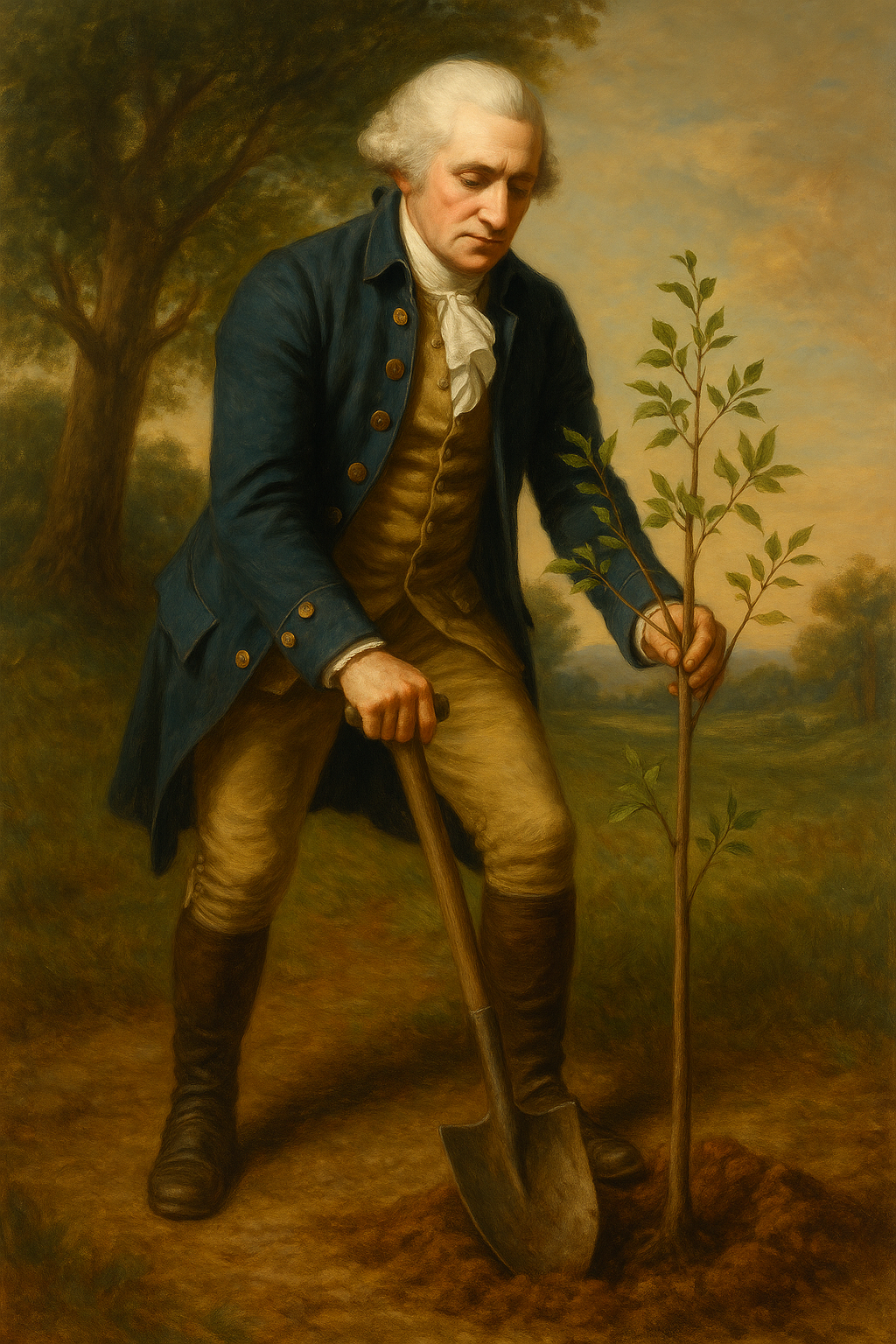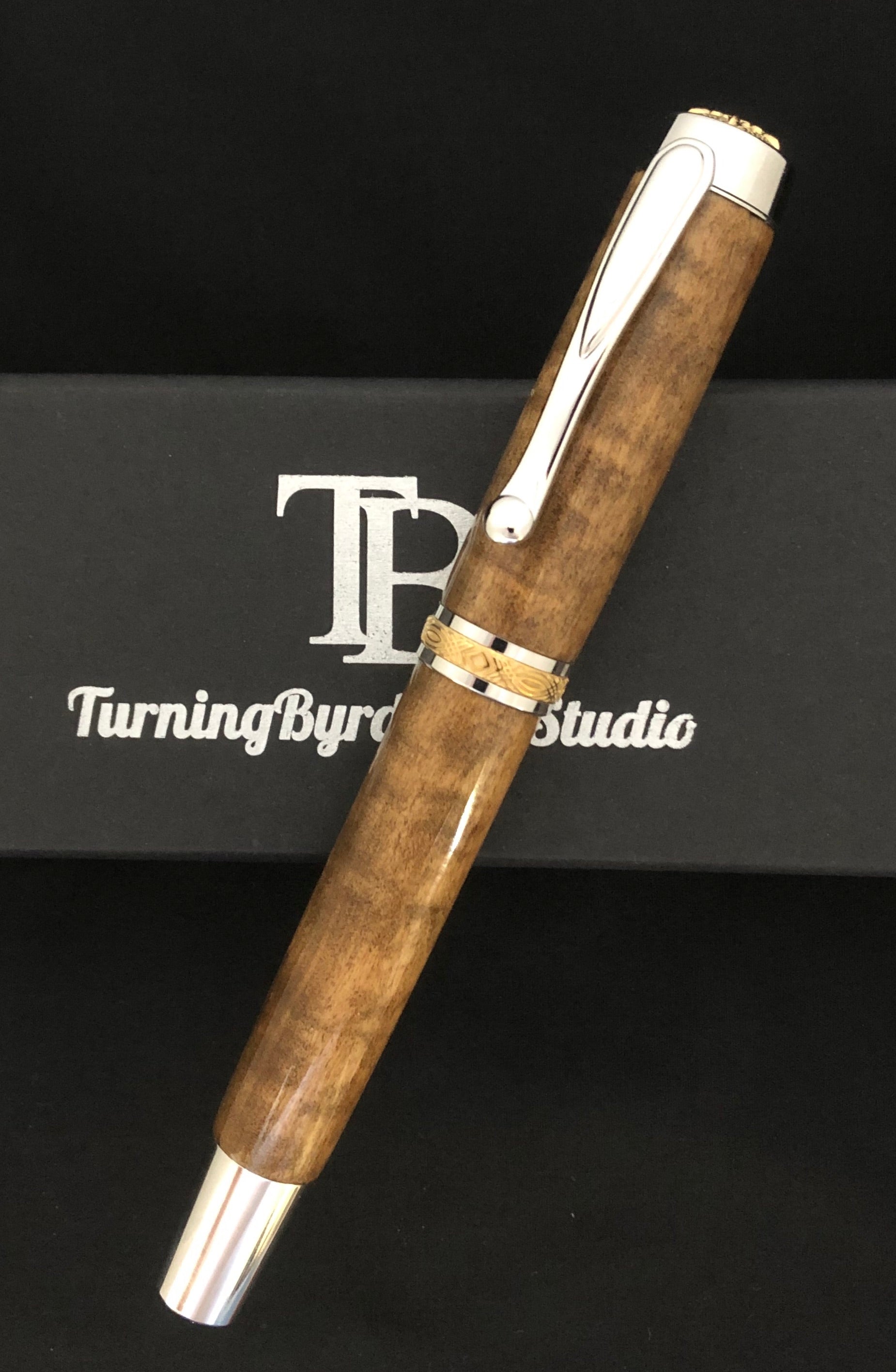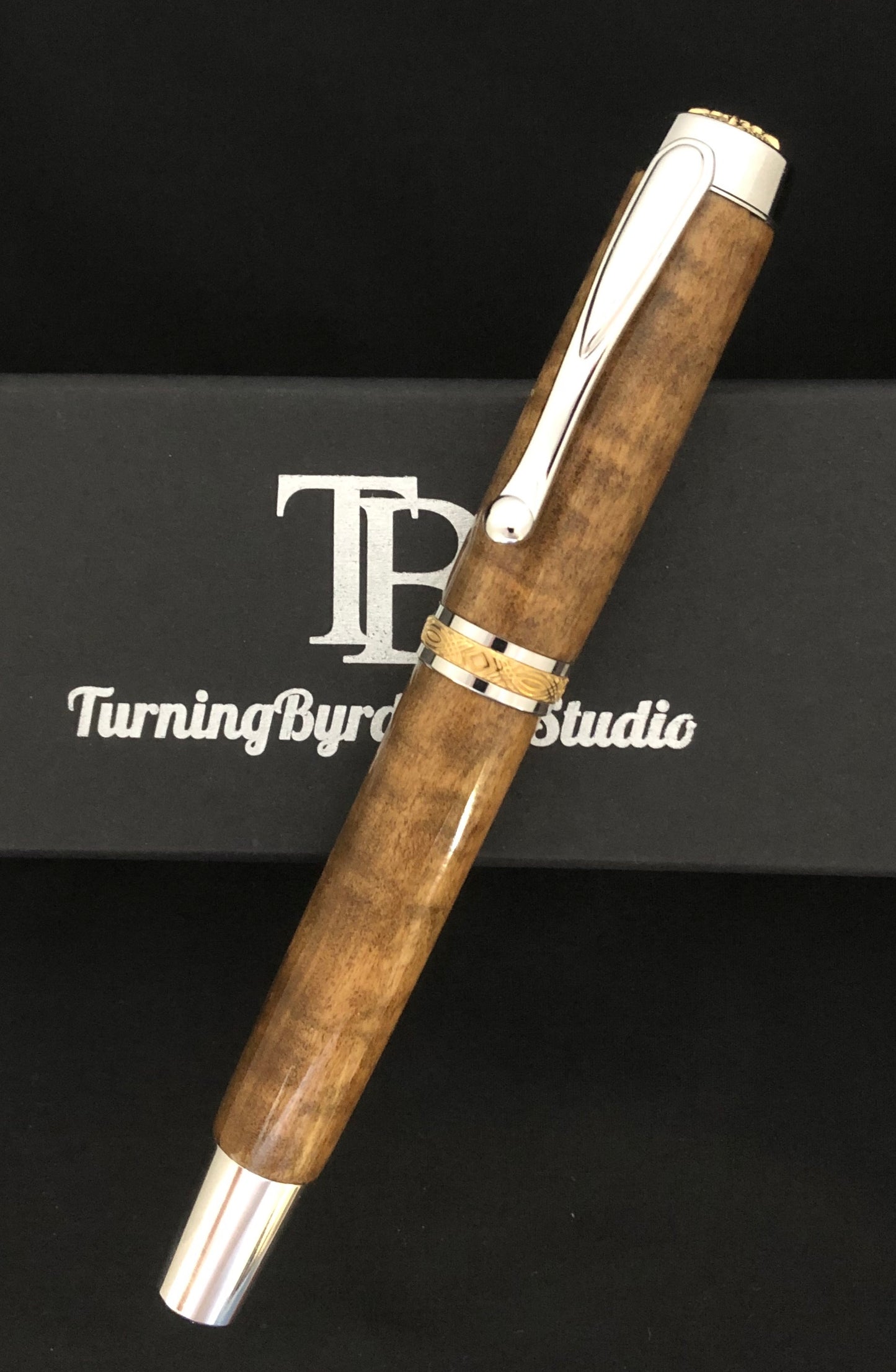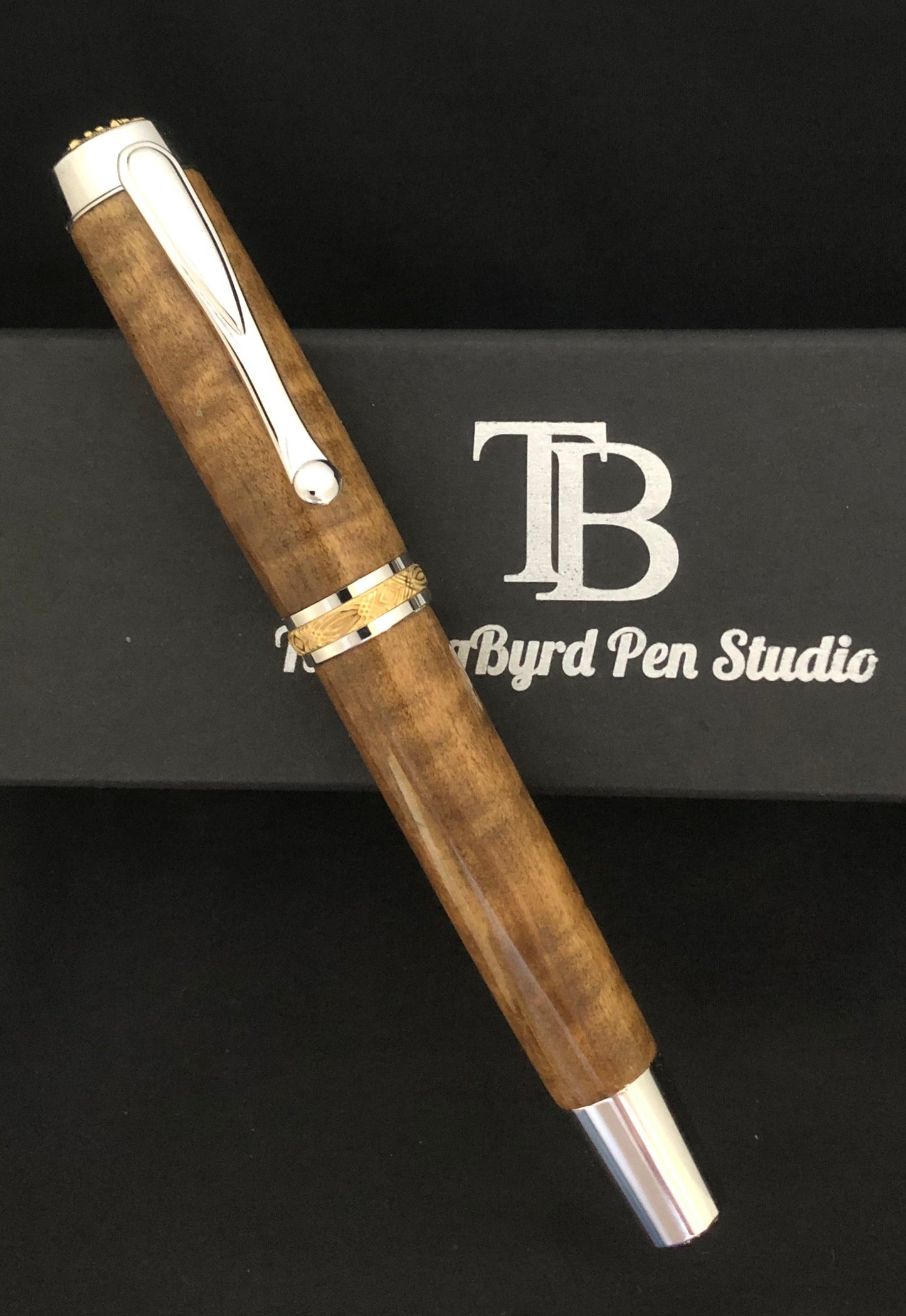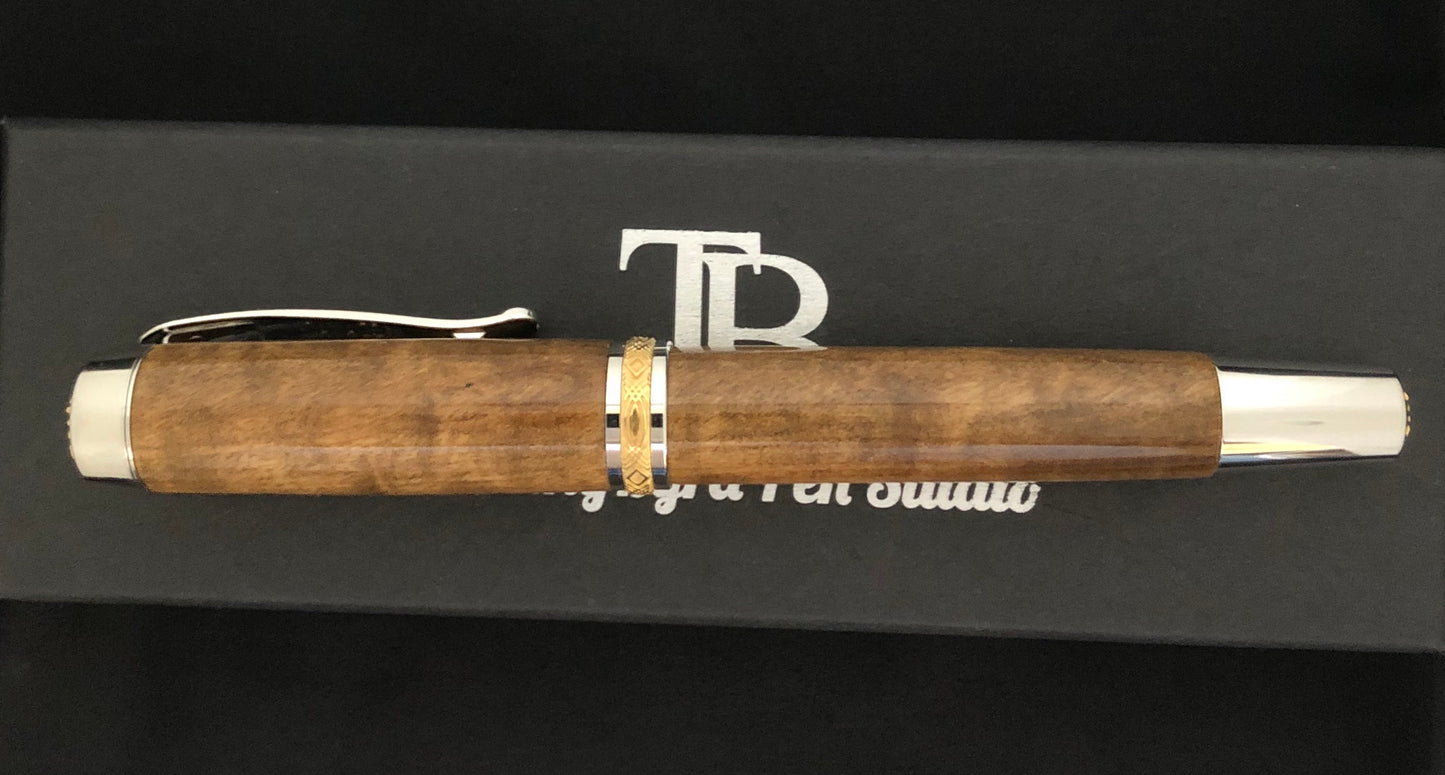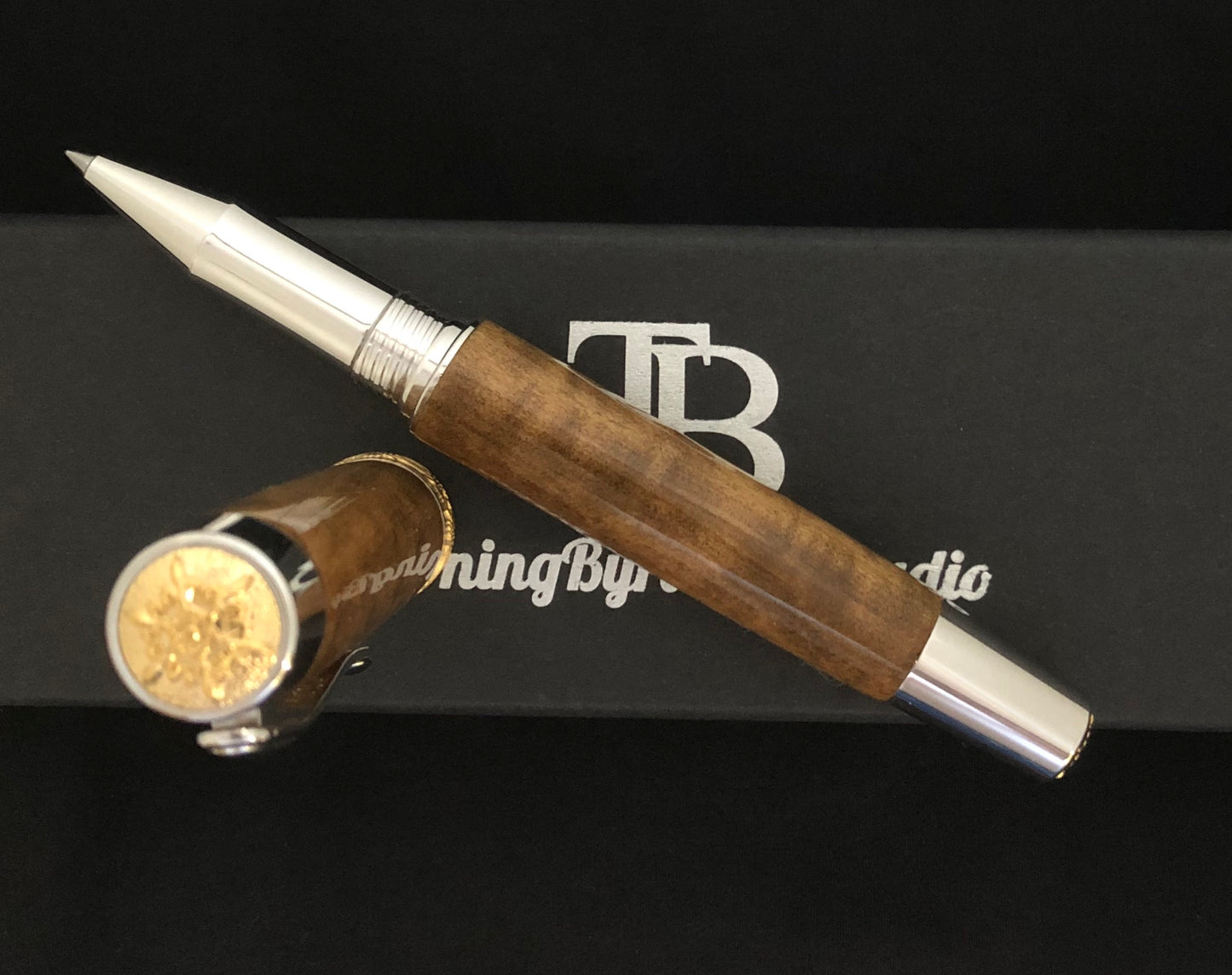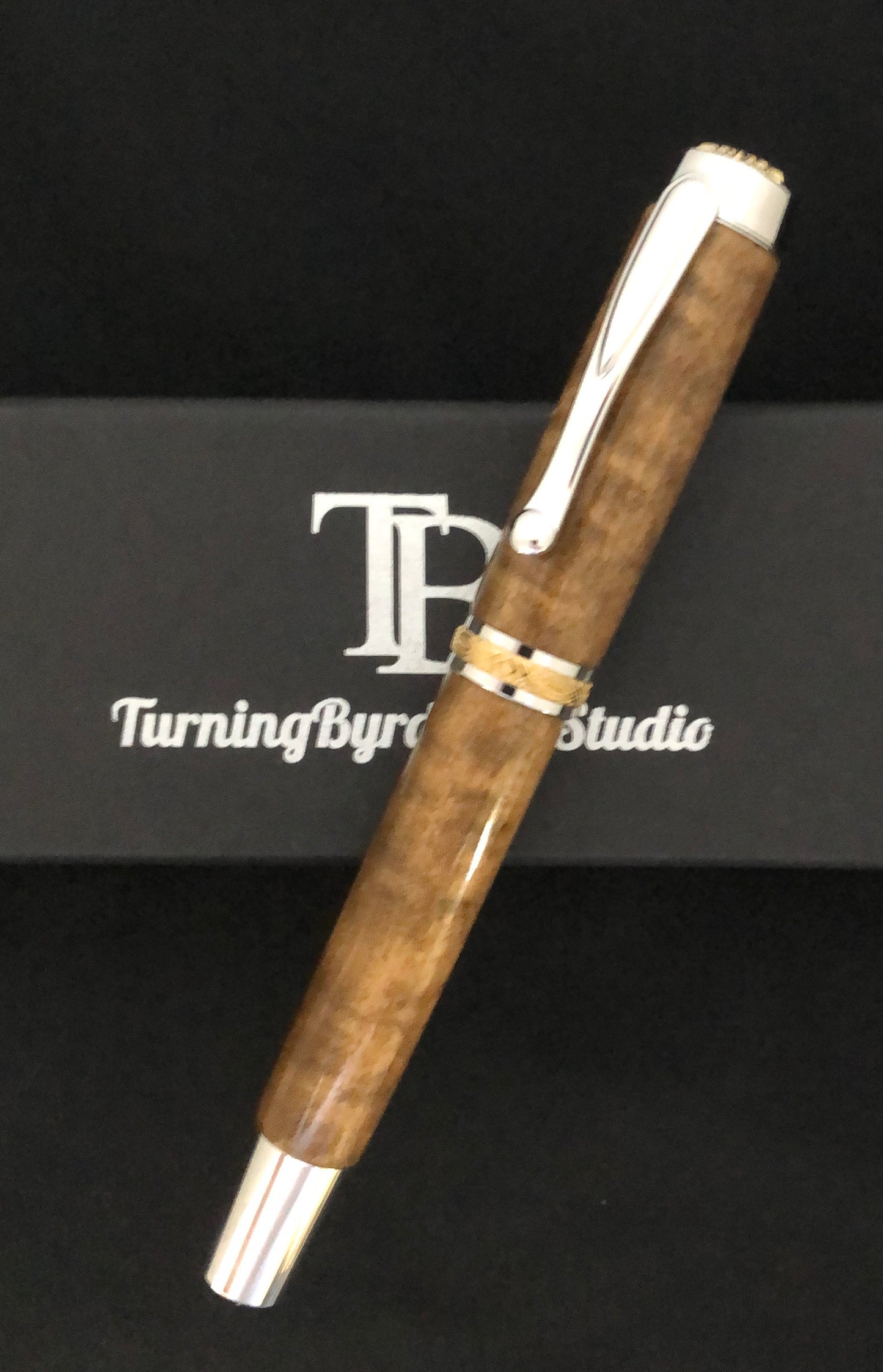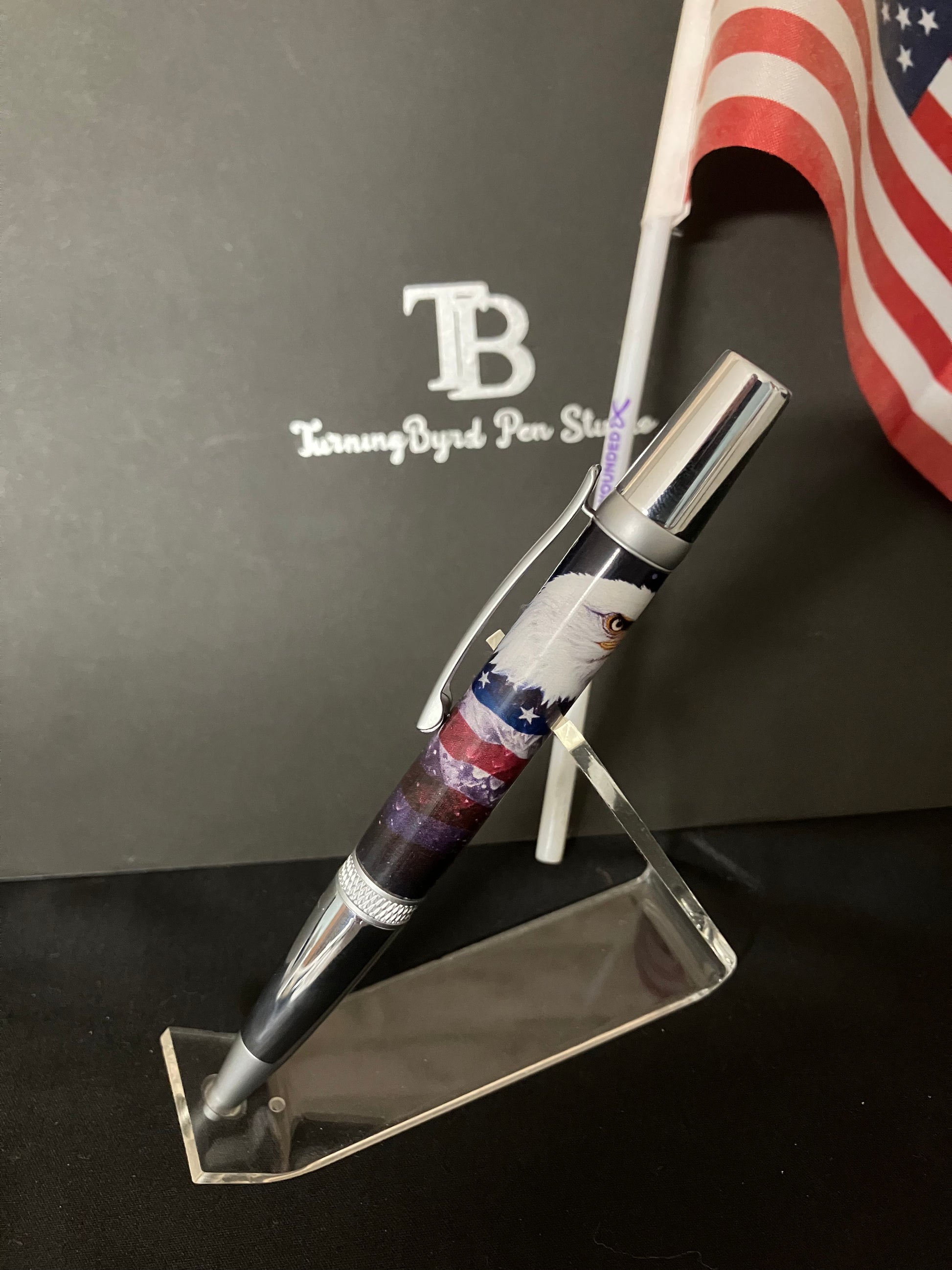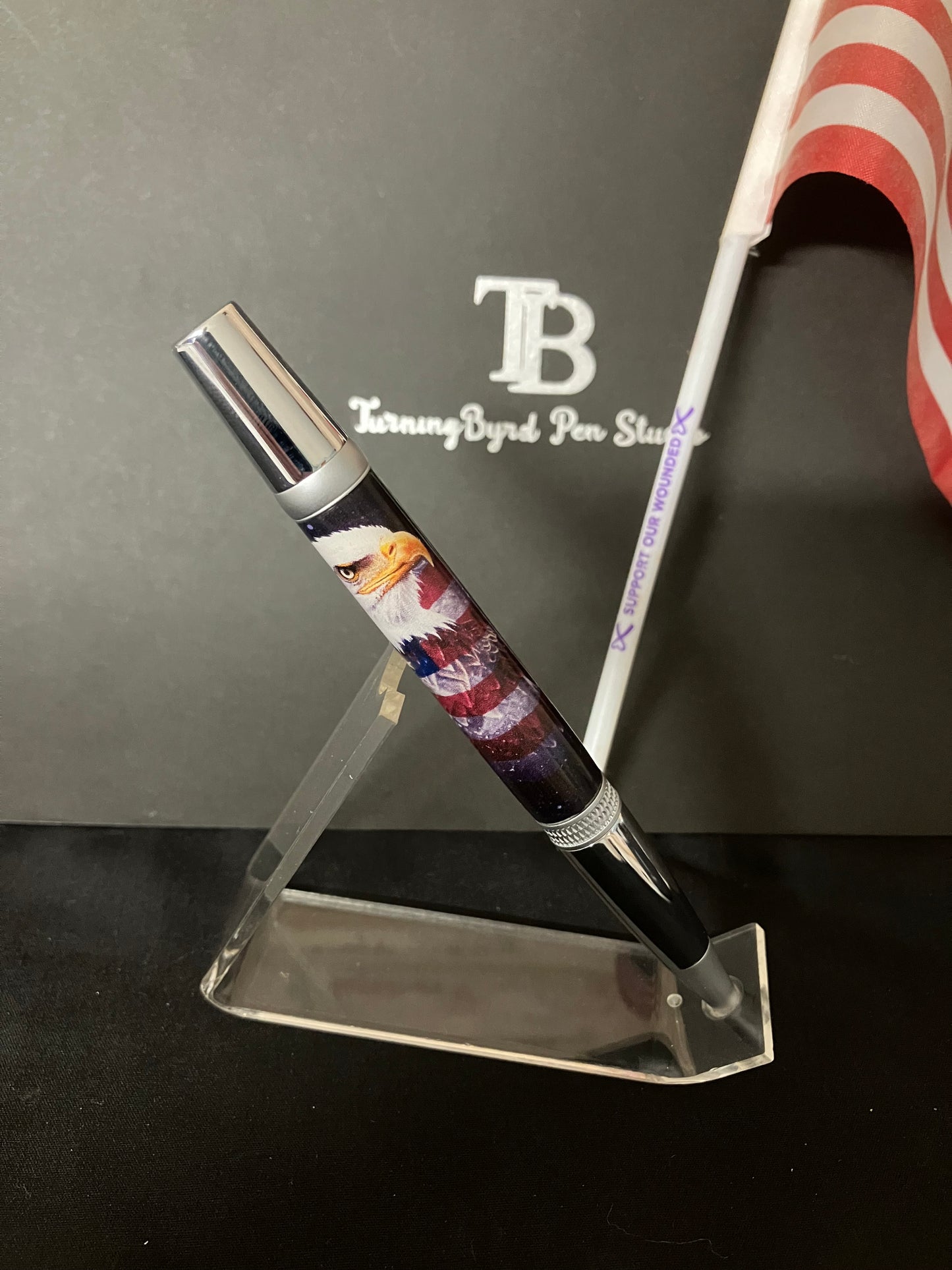The smell hit me first.
That deep, earthy, sweet-sap smell that only comes from old wood — real old wood — filled the workshop the moment my lathe bit touched the grain. I paused, just for a moment, and rested my hand on the blank.
“This tree was planted by George Washington.”
Not inspired by. Not dedicated to. Actually planted. Over 200 years ago, with his own hands, in a quiet moment between homes, on a street that knew his footsteps.
That thought settled into my chest like weight and warmth all at once.
I turned off the lathe, took a breath, and stood there — surrounded by wood shavings, with history in my hands.
This was going to be a different kind of pen.
The George Washington Pen Origin Story

I first heard about the American Horse Chestnut tree through a collector friend — one of those people who seems to know the story behind everything worth knowing. He mentioned that Washington had planted thirteen trees in Fredericksburg, Virginia — one for each of the original colonies — between his mother’s and sister’s homes.
Only one tree, known as the Georgia Tree, lived into the 21st century. When it fell in 2004, it was carefully harvested and preserved by a small circle of historians and woodworkers.
That’s where the trail went cold.
Years later, I stumbled onto a small, private listing. A few blocks of the Georgia Tree were available — but not for long. The man offering them had acquired them through family connections and was beginning to downsize. I knew I wouldn’t get a second chance.
So I bought what I could.
And then I sat with it for months. I didn’t want to rush it. I wanted the right pen design, the right balance of reverence and utility, to do this piece of American history justice.
What Made It Special
Every material decision was made with purpose.
The wood itself was delicate — not in condition, but in story. You don’t just tear into something like this. I turned slowly, carefully, watching how the grain responded. It had been alive during revolutions, presidencies, and world wars. It had seen more than I ever would.
For the hardware, I chose components that honored that legacy. The body was framed in durable Rhodium plating and 22K gold-coated details, featuring five hand-carved parts that were cast and polished by artisans who care about the craft as much as I do.
Each detail matters — from the intricate metalwork to the Schmidt Iridium gold-plated nib, a writing experience that glides, not scratches. Every pen came nestled in a maple box, the kind you don’t tuck away but display. And each came with a Certificate of Authenticity, because these weren’t just pens — they were heirlooms.
Only 7 or 8 were ever made.
And now, they're all gone.

A few people told me they were afraid to use it. “It’s too beautiful to write with,” they’d say. “I’d feel like I was going to mess it up.”
But here’s what I always tell people: beauty isn’t meant to be shelved. It’s meant to be lived with.
The patina your fingers leave on the gold, the small ink stains on the nib over time — that’s not damage. That’s legacy. A handmade pen should feel like a part of your day, your thoughts, your process. It’s not too good for everyday use. It’s a reminder that every day has value.
Because writing with something this intentional makes you more intentional.
Brené Brown once said, “Unused creativity is not benign. It metastasizes. It turns into grief, rage, judgment, sorrow, shame.”
It stuck with me because, as a maker, I’ve felt that truth. There are days when the work doesn’t flow, when perfectionism clutches too tightly, or when I worry that the piece I’m making won’t live up to the story it carries.
But the opposite is also true.
When creativity gets used — when it flows through your hands into something tangible — it heals.
This pen wasn’t just an exercise in turning. It was an act of witnessing. Of honoring. Of letting something deeply historic become something freshly alive in someone’s hands again.
The last George Washington Horse Chestnut pen has found its new home. And while I won’t ever be able to make another just like it, the story isn’t over.
I saved the shavings — all of them. And I’m currently experimenting with casting them into new resin blanks, embedding those delicate curls of history into pens that still carry that legacy, even if in a different form.
I’m also on the lookout for any remaining blocks from the Georgia Tree — tucked away in some warehouse, hopefully waiting to be found. If I get my hands on more, you’ll be the first to know.
If this pen speaks to you — if you’re the kind of person who appreciates the kind of detail most people miss — I invite you to join my email list. That’s where I share new releases, behind-the-scenes stories, and sometimes, early access to limited-run drops.
What’s the last object you used that made you pause and notice it?
What if more of what we used each day made us feel something?
Join the Collector’s List
Be the first to know when one-of-a-kind pens like this become available.

